Southeast Alaska / Yakutat Area
Subsistence Fishing
Fishing Information
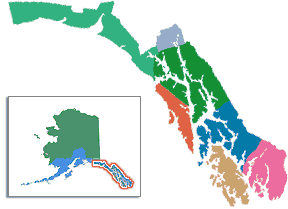
There are many subsistence salmon fisheries in Southeast Alaska and Yakutat outside of the Juneau and Ketchikan nonsubsistence use areas.Halibut may be harvested by residents of rural communities through the Federal subsistence halibut program. Other subsistence fisheries include herring spawn-on-kelp, shellfish and groundfish, which are described below. In addition, eulachon, Dolly Varden, trout, and smelt are all taken for subsistence purposes in Southeast Alaska.
Salmon
- Southeast Salmon Subsistence/Personal Use FAQs (PDF 187 kB)
- Salmon has a long history of use in Southeast Alaska and is an important component of subsistence harvests.
- Subsistence salmon fishing in Southeast is managed under a permit system that specifies harvest limits, allowable gear types and open areas/seasons. . Information and permits may be obtained online at https://store.adfg.alaska.gov/or at your local ADF&G office.
- Depending on the area you are fishing in, gear that can be used includes set gillnets, drift gillnets, gaffs, spears, beach seines, dip nets, cast nets and hand purse seines. The permit issued for each area specifies the allowable types of gear.
- If you are looking for information about the personal use fisheries in the Juneau or Ketchikan nonsubsistence use areas, including Sweetheart Creek and the Taku River, see the personal use fishing guidelines: http://www.adfg.alaska.gov/index.cfm?adfg=PersonalUsebyAreasoutheastSalmon.regs
Area Specific Information
- Haines (PDF 327 kB)
- Juneau (PDF 200 kB)
- Ketchikan (PDF 219 kB)
- Petersburg / Wrangell (PDF 245 kB)
- Sitka (PDF 262 kB)
- Yakutat (PDF 217 kB)
Subsistence and Personal Use Salmon Fishing Area Maps
- Haines (PDF 475 kB)
- Juneau (PDF 521 kB)
- Ketchikan (PDF 687 kB)
- Petersburg / Wrangell (PDF 607 kB)
- Sitka (PDF 468 kB)
Herring Spawn
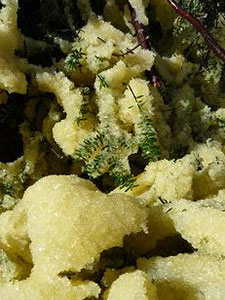
- Before participating in the herring spawn-on-kelp fishery, you need to obtain a permit from the Sitka office of the Division on Commercial Fisheries.
- The annual possession limit for herring spawn on kelp is 32 pounds for an individual or 158 pounds for a household of two or more people.
- The Sitka Sound area is known as the herring egg capital of northern Southeast; herring spawn collected in Sitka Sound is shared throughout Southeast Alaska and beyond.
- Herring eggs area a traditional food in Southeast Alaska that are traded for other subsistence foods, raw materials, and handicrafts.
- Herring eggs are collected on submerged hemlock branches, kelp, hair seaweed or rock seaweed.
Halibut
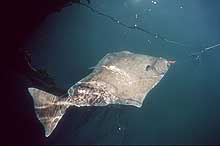
The National Marine Fisheries Service administers the subsistence halibut program under Federal regulations for residents of rural Alaska communities. To obtain a Subsistence Halibut Registration Certificate (SHARC) see the contact information at http://www.fakr.noaa.gov/ram/subsistence/halibut.htm.
Shellfish
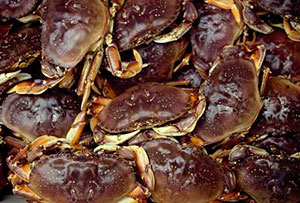
- Permits are not required to take shellfish except for shrimp, but subsistence harvest of shellfish must occur outside the boundaries of the Juneau and Ketchikan nonsubsistence use areas.
- Species taken for subsistence include Dungeness crab, king and tanner crab, shrimp, abalone, geoducks, and scallops.
- For specific details, including bag limits for the subsistence harvest of each shellfish species, see subsistence shellfish fishery regulations.
- For information on personal use shellfish harvests within the nonsubsistence use areas, see personal use.
Southeast Alaska and Yakutat Area Subsistence Groundfish Fishery
(updated August 2025)
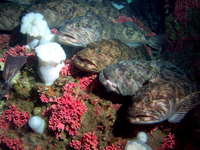
The following information outlines the State of Alaska subsistence groundfish regulations for certain waters of Alaska in the Southeast Alaska and Yakutat Areas. This is a summary of selected subsistence regulations and should be used in conjunction with the current Subsistence Statewide Fisheries Regulations. Refer to the State of Alaska Groundfish Subsistence Area map for information on area designations.
The Southeast Alaska Area consists of all waters of Alaska between Cape Fairweather and Dixon Entrance.
The Yakutat Area includes all waters of Alaska between the longitude of Cape Suckling and the longitude of Cape Fairweather.
"Waters of Alaska" for the Southeast and Yakutat Areas includes the tidal zone of the state from mean higher high water to mean lower low water, and those waters extending three miles seaward of a line (the baseline) between points described in 5 AAC 39.975 (13).
Subsistence Fishery Areas
The Alaska Board of Fisheries finds that groundfish stocks are customarily and traditionally taken or used for subsistence in certain areas and subsistence groundfish fishing is permitted only in the areas listed below.
- In the Southeastern Alaska Area:
- District 2 — north of the latitude of the northernmost tip of Chasina Point and west of a line from the northernmost tip of Chasina Point to the easternmost tip of Grindall Island to the easternmost tip of the Kasaan Peninsula
- District 3 — Sections 3-A and 3-B
- District 5 — north of a line from Point St. Albans to Cape Pole
- District 6 — Section 6-A west of a line from Macnamara Point to Mitchell Point; 6-B west of the longitude of Macnamara Point
- District 7
- District 8
- District 9 — in the waters of Section 9-B north of the latitude of Point Ellis
- District 10 — west of a line from Pinta Point to Point Pybus
- District 12 — between the latitude of Parker Point and the latitude of Point Caution, including the waters of Whitewater Bay
- District 13
- District 14 — east of the longitude of Point Dundas
- District 15 — Section 15-A
- and in the Yakutat Area:
- in the waters of Yakutat Bay, including Russell Fjord, and in waters of Alaska bounded by a line from Point Manby, at 59° 41.66' N. lat., 140° 19.57' W. long., to 59° 39.17' N. lat., 140° 26.75' W. long. to Ocean Cape, at 59° 31.62' N. lat., 139° 49.87' W. long., to 59° 29.69' N. lat., 139° 55.18' W. long.
General Subsistence Groundfish Fishery Regulations
- Subsistence fishing is defined as the non-commercial harvest of fish for personal or family consumption, customary trade, or the creation of handicraft items from by-products.
- Groundfish may be taken for subsistence purposes only by Alaskan residents.
- Groundfish species include: sablefish, Pacific cod, lingcod, flatfish (excluding halibut), walleye pollock, skates, and all species of rockfish.
- There are no restrictions on the amount of gear permitted for subsistence groundfish fishing.
- Each subsistence groundfish fisher shall plainly and legibly inscribe the fisher's first initial, last name and home address on the buoys attached to the unattended subsistence fishing gear.
Area Closures
- The waters off Cape Edgecumbe enclosed by a box defined as 56° 55.5' N. lat., 56° 57' N. lat., 135° 54' W. long., and 135° 57' W. long. are closed to fishing for all species of groundfish.
Daily Bag and Possession Limits
- There are no daily bag, possession or annual limits for subsistence groundfish.
Gear Restrictions
- Subsistence groundfish may be taken at any time with longline, pot, mechanical jigging machines, hand and power troll gear or other gear defined in 5 AAC 39.105 and 5 AAC 01.010, except that lingcod may not be taken in the Southeast Alaska Area with a spear or while using diving gear from December 1 through May 15 (5 AAC 01.710). Rod and reel is not a legal subsistence groundfish gear.
- Pots must comply with escape mechanism requirements in 5 AAC 39.145. All pot gear must have individual tunnel eye openings with perimeters of 36 inches or less.
- A collapsible pot must contain two escapement openings on opposite sides of the pot equal to or exceeding 18 inches in length that must be laced, sewn, or secured together by a single length of untreated 100-percent cotton twine no larger than 30 thread count. Twine may be knotted at each end only and the opening must be within 6 inches of the edge of the pot and must be parallel with it.
- Pots must have at least two circular escape rings, with a minimum diameter of three and one-half inches, installed on opposing vertical or sloping walls of the pot.
- A vessel or a person on board a vessel may not participate in a commercial sablefish fishery in the NSEI and SSEI subdistricts if the vessel or person on board the vessel operates commercial, subsistence, sport, or personal use halibut or groundfish fishing gear during the 72-hour period immediately before an opening of the commercial sablefish fishery in that subdistrict.
- A vessel or permit holder participating in a commercial sablefish fishery in NSEI or SSEI may not operate subsistence, sport, or personal use halibut or groundfish fishing gear during the commercial sablefish fishery or during the 72 hours immediately following the closure of that fishery unless they meet specific exemptions. Exemptions include if the vessel has not yet registered or if the vessel or permit holder has fully harvested and offloaded their quota at least 72 hours prior, has removed their commercial gear from the water for 72 hours, and has canceled their registration at least 72 hours earlier with a local representative of the department.
- A person on board a vessel from which fishing gear is used to take groundfish for subsistence or personal use in the NSEI or SSEI Subdistricts may not operate commercial fishing gear for groundfish from that vessel until all subsistence or personal use-taken groundfish are offloaded from the vessel.
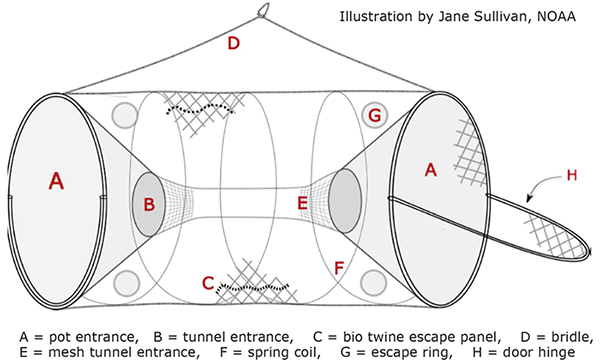
Other Restrictions
- It is unlawful to buy or sell subsistence-taken fish, their parts, or their eggs, except that it is lawful to buy or sell a handicraft made out of the skin or nonedible by-products of fish taken for personal or family consumption.
- Sablefish, lingcod, and thornyhead, shortraker, rougheye and yelloweye rockfish taken may not be used as bait in a commercial fishery.
- Contact Glacier Bay National Park and Preserve prior to engaging in the state subsistence groundfish fishery within Glacier Bay National Park (907) 697-2230.
- Check halibut rules separately (SHARC card required)
Call NOAA: (907) 586-7225
More info: NOAA Subsistence Halibut Info
Regulations Specific to Subsistence Sablefish Fishery
(Refer to permit for more information)
In the Southeast Alaska Area, subsistence sablefish may be taken only as follows:
- A subsistence fishing permit issued by the department is required to take sablefish; only one permit will be issued per household per year.
- Permit holder or a household member listed on the permit must have a valid permit in possession when fishing.
- There is no daily bag, possession, or annual limit for subsistence sablefish.
- A permit holder shall record fishing activity on the permit Fishing Report prior to leaving the fishing site.
- You must report your harvest, even if you didn’t fish. Failure to report will affect your ability to receive a permit in subsequent years.
Sablefish Subsistence Reporting Options
- Online: www.adfg.alaska.gov/sf/PU/
- Email: dfg.dcf.sablefish@alaska.gov
- Mail:
ADF&G – Sablefish PU/SU Permits
304 Lake St., Room 103, Sitka, AK 99835-7563
Questions?
Call Sitka ADF&G Office: (907) 747-6688
